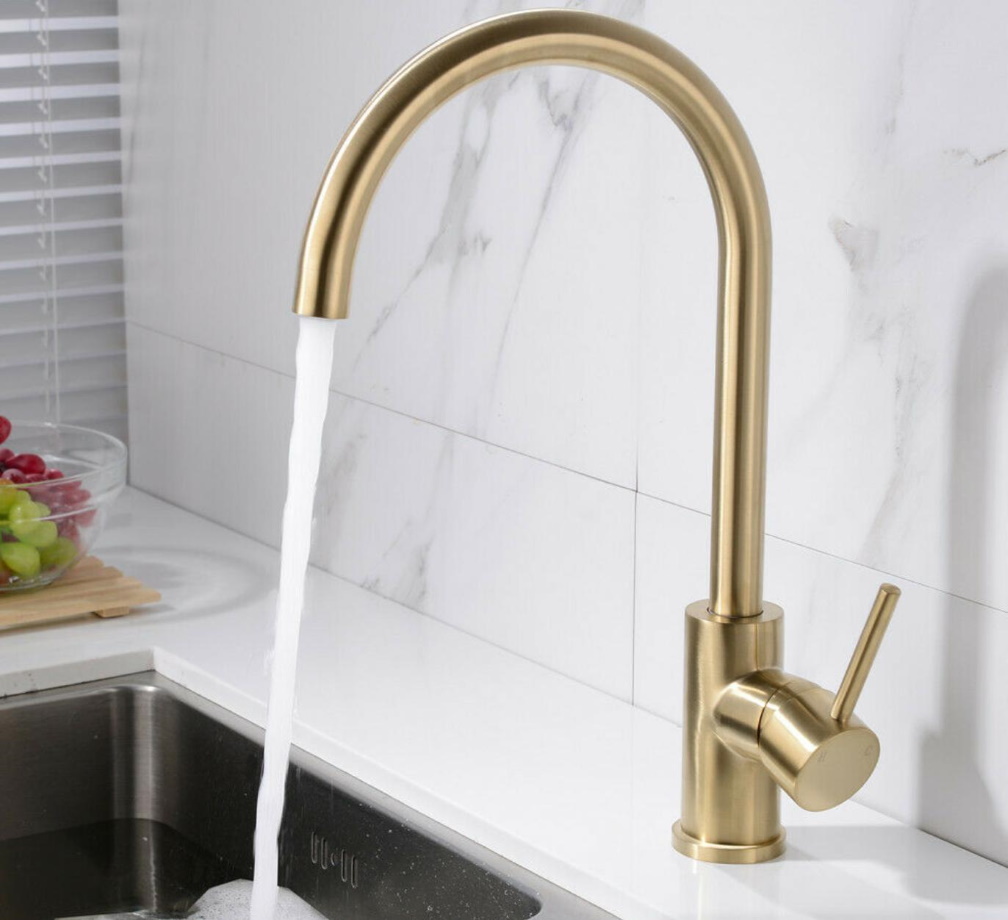The clean kitchen: tips for cleaning your mixer tap

Mixer taps require occasional cleaning as, like any other tapware, they are in constant contact with water which can form limescale. Limescale isn’t hazardous, but many people simply don’t want it on their taps because it changes the aesthetic.
Cleaning your kitchen mixer doesn’t have to be a nuisance - it can just be added to the list of other household cleaning duties.
Here are the best ways to clean your steel, aluminium or brass kitchen mixer so that it’s always in tip-top condition.
-
Preventing limescale build up
You don’t want to consistently leave drops of water on your kitchen mixer (just as you wouldn’t any other tapware). These water droplets can dry up and leave limescale to build up on them. This can quickly worsen especially in areas where there is a buildup of “hard water” - water that has a high calcium bicarbonate content.
The easiest way to prevent hard water buildup on your kitchen mixer is to give it a simple wipe down with a microfibre cloth every time you notice there is a decent amount of water building up on the surface.
-
Gentle limescale removal
If limescale has already been allowed to form on your kitchen mixer, it’s a good idea to go to work on removing it with an organic, mild acid like that of citric acid or acetic. But before you do this, you have to ensure that your tapware can withstand acidic substances.
For example, marble and aluminium do not mix well with acidic substances. Varnishes and plastics are also non-resistant to many acidic cleaning substances and this is something you should be aware of before going to work on cleaning your tapware.
Now, when it comes to removing the limescale, you want to apply the cleaning agent to the soft side of the sponge and give the mixer a really good wiping. Don’t leave the acid-based cleaner on the tap if the cleaner’s directions say otherwise. Avoid scrubbing the tapware with the rough side of your sponge as this could damage the finish and even scratch the tap. Next, wipe your mixer tap down with a dry microfiber cloth or towel.
Cleaning aerators
Your tap can potentially become clogged from the build up of hard water in your tap. The aerator, therefore, has to be occasionally cleaned to avoid your water flow going all over the place and making more of a mess than it actually cleans!
You can either use citric acid or acetic to clean your mixer’s aerator (once again, given your tap can handle acidic cleaning products). Moisten a sponge with the cleaning product and spread it over the fine mesh where the water comes from the mixer tap. You can even use an old toothbrush to give the mesh a finer clean. These methods should make the limescale despot dissolve.
Getting ridden of stubborn limescale on the mixer
Sometimes, if left too long, limescale build up can be a real nuisance, and require more thorough cleaning. You can often unscrew the aerator from the mixer tap and leave the jet regulator in citric acid or vinegar water overnight. You can then rinse off the limescale and unwanted vinegar/acid residue before reattaching the mixer tap.
See, cleaning your mixer tap is easy! It’s just that, with any other form of kitchen tapware, hard water can build up and cause what we have all seen thousands of times before - limescale!

